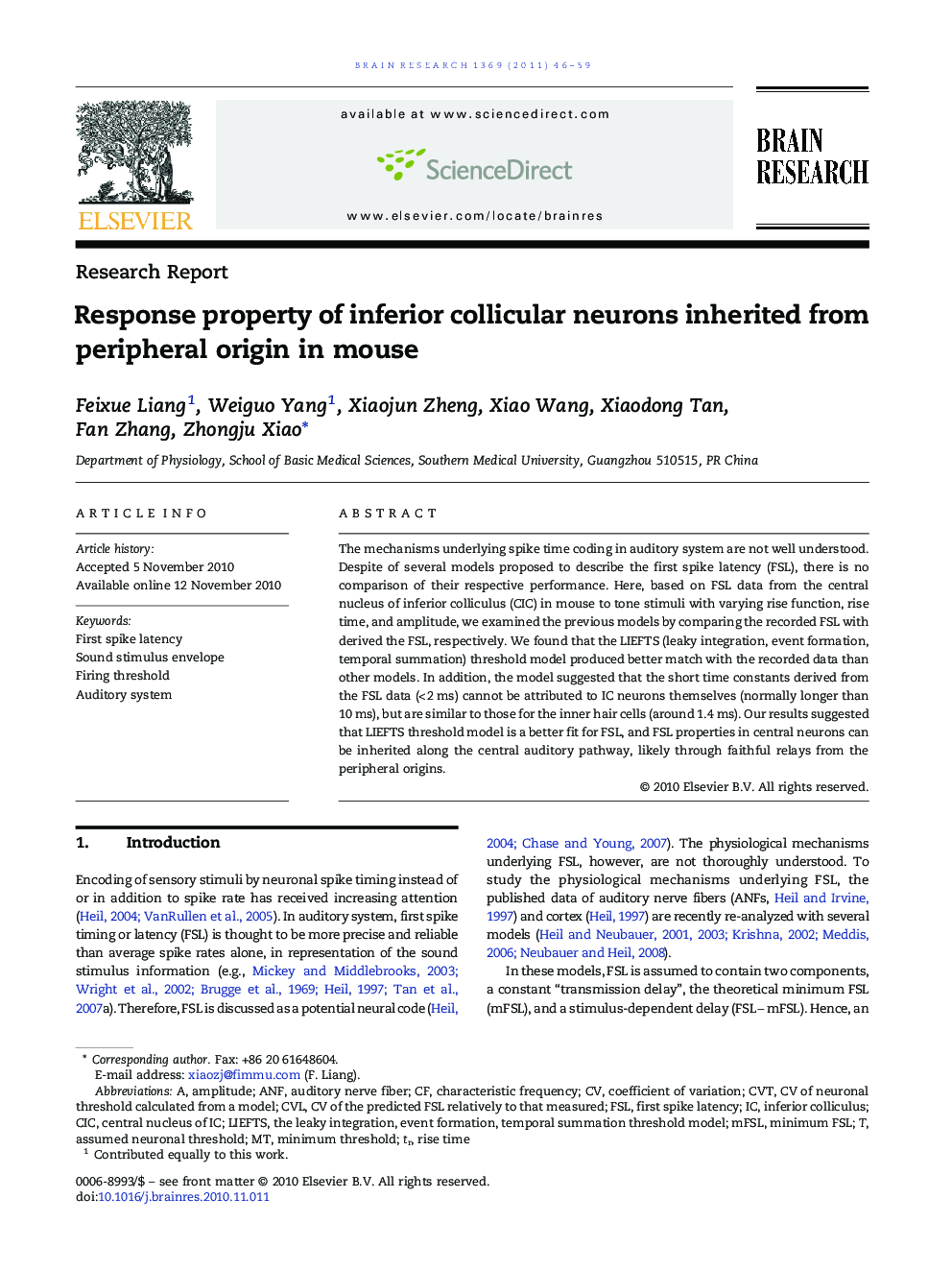| کد مقاله | کد نشریه | سال انتشار | مقاله انگلیسی | نسخه تمام متن |
|---|---|---|---|---|
| 6265364 | 1614070 | 2011 | 14 صفحه PDF | دانلود رایگان |

The mechanisms underlying spike time coding in auditory system are not well understood. Despite of several models proposed to describe the first spike latency (FSL), there is no comparison of their respective performance. Here, based on FSL data from the central nucleus of inferior colliculus (CIC) in mouse to tone stimuli with varying rise function, rise time, and amplitude, we examined the previous models by comparing the recorded FSL with derived the FSL, respectively. We found that the LIEFTS (leaky integration, event formation, temporal summation) threshold model produced better match with the recorded data than other models. In addition, the model suggested that the short time constants derived from the FSL data (<Â 2Â ms) cannot be attributed to IC neurons themselves (normally longer than 10Â ms), but are similar to those for the inner hair cells (around 1.4Â ms). Our results suggested that LIEFTS threshold model is a better fit for FSL, and FSL properties in central neurons can be inherited along the central auditory pathway, likely through faithful relays from the peripheral origins.
Research Highlights⺠FSL of IC neurons is a function of the time course of sound stimulus envelope. ⺠LIEFTS threshold model is a better fit than the other alternative functions. ⺠The time constants derived from FSL of IC are similar to those for the inner hair cells. ⺠mFSL derived from FSL data of IC characterizes the recorded site. ⺠Central neurons trustily relay the information from the inner hair cells.
Journal: Brain Research - Volume 1369, 19 January 2011, Pages 46-59